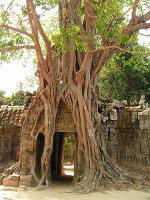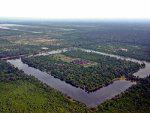 Ta Som
In the forests of north-western Cambodia lies one of South-East Asia's most important archaeological sites, the magnificent ruins of the once thriving Angkor Civilisation. Dominating this part of the world from the 9th to the 15th century, ruler after ruler made their mark by erecting monumental structures as their capital in the heart of the jungle.
Ta Som
In the forests of north-western Cambodia lies one of South-East Asia's most important archaeological sites, the magnificent ruins of the once thriving Angkor Civilisation. Dominating this part of the world from the 9th to the 15th century, ruler after ruler made their mark by erecting monumental structures as their capital in the heart of the jungle.Thought to have supported up to a million people in it's prime, the Angkor region not only covers a vast area of more than 400 square kilometres, but also demonstrates significant advances in society for the time, from complex irrigation systems to the building of the world's largest religious building (even today), the glorious temple of Angkor Wat.

After centuries of the many successive Khmer capitals and their rulers, the civilisation declined in the 15th century leading to the complete abandonment of the hundreds of enormous stone structures that dotted the region. The great city and it's temples had remained hidden in the growing jungle for more than 400 years when it was discovered by a French archaeologist in the late 19th century.


